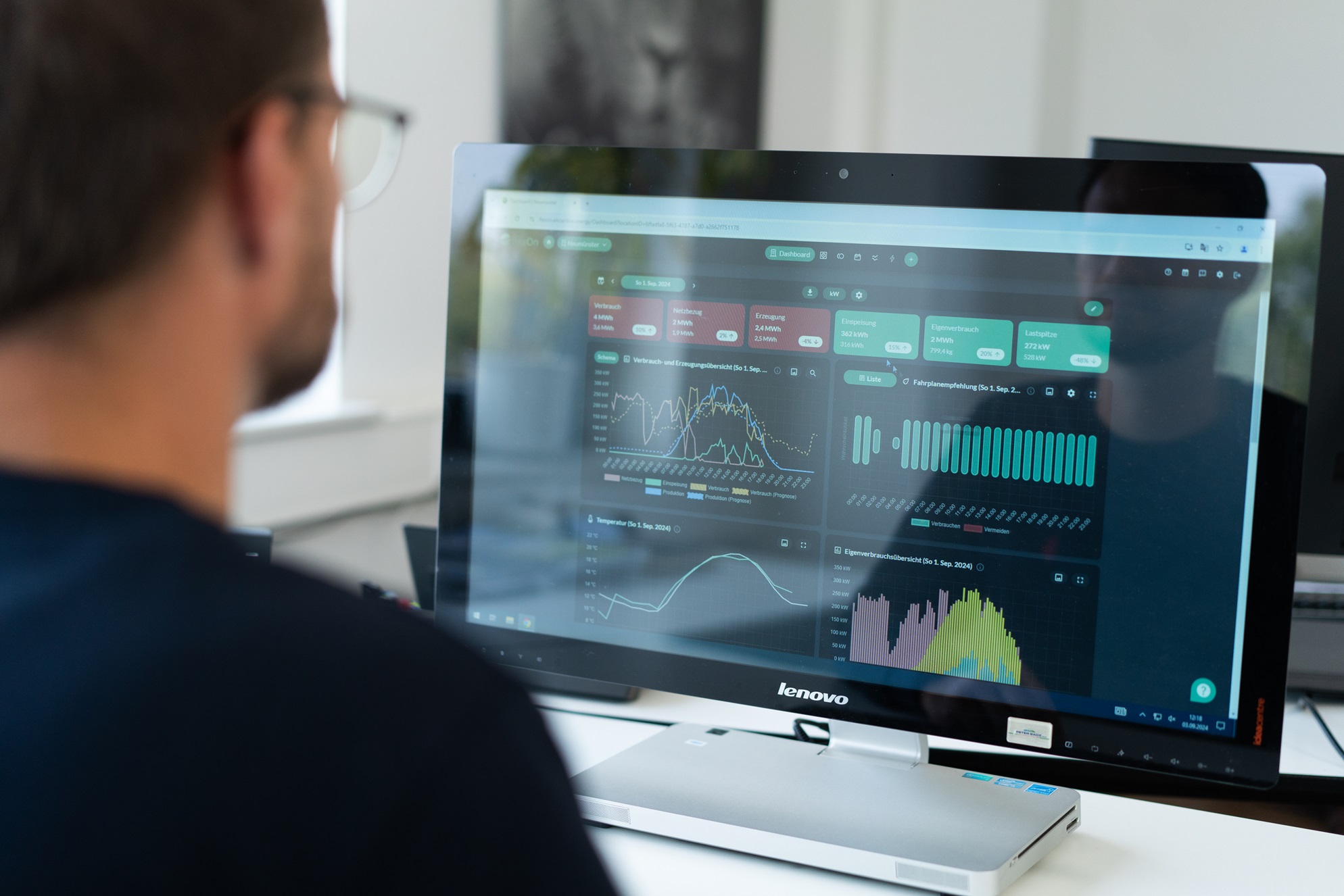Optimizing clectricity costs: How companies reduce expenses with new tariff models
Rising energy prices and increasing market volatility are making electricity cost optimization a key economic lever for many companies. Learn how flexible tariffs, dynamic grid fees, and targeted load management can help reduce energy costs sustainably.

Why is optimizing electricity costs especially important for companies right now?
As the share of renewable energy continues to grow, dependence on weather-dependent power generation is also increasing – and with it, price volatility in the electricity market. According to a recent study by the EWI at the University of Cologne, electricity price volatility in Germany is already rising significantly, especially in the day-ahead and intraday markets.
For companies, this means electricity prices are becoming increasingly difficult to forecast – and energy costs are turning into a key cost lever. To truly optimize electricity costs, companies need more than just a good supply contract. Modern tariff models, digital load management, and intelligent energy management systems open up new savings potentials that were rarely used just a few years ago.
One particularly relevant development: the shift toward flexible and dynamic grid charges. While current regulations around individual grid fees (such as atypical grid usage) mainly reward steady consumption patterns, future models like flexible grid fees aim for the opposite: more flexibility to relieve the grid and allocate costs more fairly. These models reward flexible consumption by differentiating grid charges based on real-time network load. Companies that already shift their loads can now directly benefit from lower grid fees – a cost lever previously only accessible via special regulations like atypical usage.
In combination with other measures, from improving energy efficiency optimization to using self-generated power, companies can implement a comprehensive cost strategy that delivers both short-term savings and long-term planning certainty.
What are the biggest cost drivers in a company's electricity bill?
Before companies can effectively optimize electricity costs, it’s worth taking a closer look at the structure of the bill. The energy price per kilowatt-hour often accounts for only part of the total – in many cases, even less than half.
Key components of electricity costs for companies:
Energy price (procurement costs)
- Costs for the actual electricity supply, depending on market prices and contract drafting.
- Highly volatile due to market dynamics, seasonal trends, and short-term events.
Grid fees
- Charges forusing the public electricity grid, set by the grid operators.
- Often make up 20-25% of total electricity costs in industrial settings.
- A key lever: dynamic grid fees that vary based on grid load and reward flexible consumption.
Taxes, duties and charges
- Examples: electricity tax, concession levy, KWKG surcharge.
- Typically only partially controllable for companies.
Load peaks in high-load time windows
- A temporary spike in power consumption – especially during designated peak hours – can lead to substantial extra charges.
- Peak shaving is a proven method for reducing these costs.
To optimize electricity costs strategically, companies should look beyond the procurement price alone. Grid fees, load profiles, and regulatory cost components must also be considered – and that’s where smart tariff models and automated control come into play.
Overview of new tariff models
The liberalization of energy markets and the increasing share of renewables are not only changing electricity generation, but also pricing models. This opens up new opportunities for companies to reduce their electricity costs – provided they know which tariff models exist and how to use them.
Dynamic grid fees
- How it works: The costs of grid usage varies based on real-time grid load and is adjusted in predefined time windows.
- Advantage: Companies that already operate flexibly can now benefit from lower grid fees during low-load periods, receiving direct discounts or reduced charges – something previously only possible through special schemes like atypical grid usage.
Flexible electricity tariffs
- How it works: Prices are based on the electricity exchange (day-ahead or intraday).
- Advantage: Cost-effective purchasing during times of low market prices – for example, when wind and solar generation is high.
Time-of-use demand charges
- How it works: Demand charges are calculated based on the time of day or season.
- Advantage: Flexible businesses can avoid expensive peak hours.
Combined tariff models
- How it works: Combination of dynamic grid fees, variable energy prices, and peak-load tariffs.
- Advantage: Maximum flexibility and cost optimization, especially when managed by an energy management system that automatically coordinates prices and load control.
Case study: How Peter Bade GmbH reduces its electricity costs
The case of Peter Bade GmbH illustrates how companies can succesfully optimize electricity costs:
This cold logistics company uses flexible electricity tariffbased on real-time market prices and additionally takes advantage of atypical grid usage, allowing it to benefit from reduced grid charges during low-demand periods. With the help of our intelligent energy management platform flexOn, energy-intensive consumers such as refrigeration systems are automatically shifted to periodswith lower electricity prices or low grid load – which leads to significantly reduces grid charges. As a result, grid fees were reduced by 30% reduced and the energy price lowered by 15.6%.
Using electricity cost optimization as a competitive advantage
Optimizing electricity costs means consuming more flexibly. Flexible tariffs and dynamic grid fees only reach their full potential when companies automate load shifting and integrate self-generated electricity effectively. Combined with a smart energy management system, this approach cuts costs, boosts efficiency, and contributes to the energy transition.
Using energy cost optimization as a competitive advantage
Optimizing electricity costs means consuming flexibly. Flexible tariffs and dynamic network charges develop their potential when companies automatically shift loads and make optimal use of their own generation. Combining this with an energy management system reduces costs, increases efficiency and contributes to the energy revolution.







